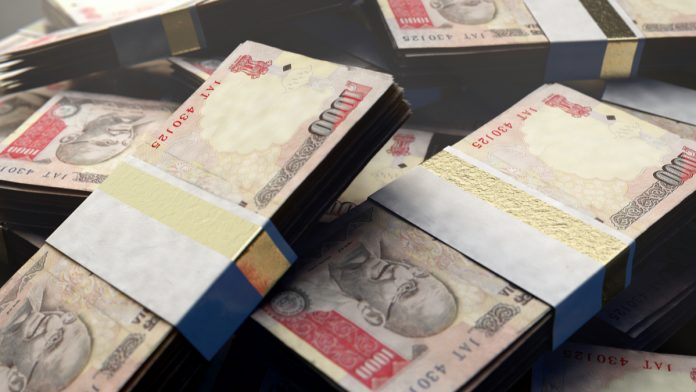- Indian Rupee (INR) trades lower paring gains from last week
- Indian announced stimulus to boot consumer demand & infrastructure spending
- US Dollar (USD) trades steadily in public holiday trading
- US fiscal stimulus package still not agreed
The US Dollar Indian Rupee (USD/INR) exchange rate is pushing northwards, paring losses from the previous week. The pair ended the previous week at 73.01 down -0.4% across the week. At 10:15 UTC, USD/INR trades +0.4% at 73.31.
The Indian government has announced new measures to boost consumer demand as it attempts to stimulate its covid ravaged economy. India’s finance minister announced measures which include the advance payment of wages of federal government employees in festival season. The government will also spend an additional $3.4 billion on infrastructure projects such as new roads, pts and also on defence projects. State governments will also be able to apply for 50-year interest free loans to spend on infrastructure projects.
These measures come as the government pushes ahead with the reopening of the economy ahead of the usually high spending festival seasons which runs from October to March.
The government confirmed that the extra spending would not require any extra borrowing by the Federal government. The government intends to stick to its current borrowing target of $163.78 billion in the current fiscal year.
The total number of coronavirus cases in India crossed 7.12 million, only second to the USA.
Looking ahead investors will await data on Indian industrial production and inflation due later today.
The US Dollar is trading relatively subdued on Monday as the US observes a public holiday. US stimulus remains a key focus. There is still no Congressional agreement. House Speaker Nancy Pelosi and Senate Republicans both rejected US President Trump’s $1.8 trillion fiscal stimulus proposal. This proposal was a marginal improvement from the previous Republican’s offer of $1.6 trillion. However, it remains well short of the Democrat’s $2.2 trillion proposal meaning that the stalemate remains at least for now.
In the absence of any US economic data, the US Dollar will be driven by sentiment.




